A beautiful boat is sailing towards an abandoned island hold by cyber-terrorists. James Bond disembarks and is immediately handcuffed. Then, accompanied by his new friends, he casually walks to a huge u-shaped building…
I am holding my breath on my theater sit… “The Block 65 ! This is the Block 65 !”. I feel like yelling but luckily, I have a pop-corn trapped in my throat that saved me from all the potential troubles.
The Block 65 is the iconic building of the abandoned island of Gunkanjima. What, you still don’t know what Gunkanjima is? If that is the case, please go check my summary here: Gunkanjima: Stories & Photos 🙂 If you have seen that ready, I’ll take you for a little walk in and out the Block 65.
Around the Block 65
The front of the building – where James Bond is walking to – is actually not a main entrance at all. It was simply a place where people would gather, especially housewives and children. There are a few kids attractions left, overgrown with weeds.
The north side of the building is very different (relatively speaking) and has some kind of gutter-looking balconies. Behind them, surprisingly, is not apartments at all; it was actually a staircase where originally a big bulky lift was supposed to be installed. It ended up being a very convenient entrance with the hospital just in front of it, and the school to the right side when you leave the building (at the back on the left of the photo). The school was also accessible using a scary footbridge on the top floor (better not to try walking on it!).
The Block 65 is a post-apocalyptic U-shape building of 9 floors. It is turning slowly but surely into crumbs of rocks : once upon a time, it was still alright to use the seawater to make the concrete but years later, the salt excited by the local humidity is grunting on the framework, the steel can turn into dust when slightly touched.
When you look a bit more closely at it, some part seem to be in much better state than the others. The first 7 stairs of the northern part (on the left here) were actually built in 1945. It was still the war at that time and it is the only building that was actually been build in the whole Japan! They gave it the name of “In Our Country’s Service”.
In 1947, two floors are added. Two years later, the east part is built (the one in the center) and the building became L-shaped (of course it is an inverse L when we are in front, like here). In 1953, they covered that half-baked monolithic thing into a 10th floors building (the kindergarten on the roof) and added the south part on-the-go, which gives that building its final look, the dreadful U-shaped building. That’s why the north and south part look really different, and the most recent one is much better build and called “The New 65”. This new part of the building has also nicer apartments with… flush toilets!
Surprisingly, the wooden balconies are still looking good despite the weight of the passing years, the typhoon, quakes, bombs and worse, the urban explorers. Some of those balconies are still intact even though the windows behind them are completely smashed.
Don’t you think this building is like a reminder of the Kowloon Walled City in Hong Kong, demolished in 1993? We can still picture this building alive here, with all the clothes drying out on the balconies, similar to the photos of Kowloon Walled City…
Would you mind walking in that nightmarish place? Probably like me, you would think it’s a fabulous stroll, and it feels more like a paradise than anything else. It’s grand, quiet, the architecture is impressive, the wind put your heart at rest. The iodine smell is also a good reminder than we are surrounded by the Pacific sea when we can’t hear the waves on the island’s wall.
Let’s stop dreaming, the clock is ticking! Let’s go visit the 17 square kilometers of the inside.
Inside the Block 65
There are 317 apartments in the Block 65, so it is really a hard job to visit them all. The idea is just to peak quickly in each of them in order to find an interesting scene or curiosities. They all look pretty similar, with equivalent sizes and tatami mat (in rather a good state).
Between the stairs, there is a very old Kyoraku pachinko. It looks very simple and a bit smaller than the ones we can see in the modern pachinko parlors. Here is now a new dream for me : finding an old pachinko parlor, full of those old machines, steampunk-style ! However I am pretty sure those places were much smaller than the ones we are used today.
Let’s check those apartments.
Stairs…
A particularity of the Gunkanjima’s Block 65 is that it contains a bunch of interesting objects, as the others buildings around are mostly empty. Why is that? Here is my two cents: The Block 65, being one of the most important building, might have been used and inhabited until the very end and people, having a very little time to leave, just left a lot of thing behind. Any other ideas?
Above, this is a National Fridge (now Panasonic). The island is far from being 100% Mitsubishi (though most machines and buildings were).
I don’t really know what is this “High Look Console” but maybe some kind of HI-FI device? But I love the clock next to it : it’s a Seiko, very similar to the ones we found everywhere in Japan, particularly the one on top of the very famous Wako Building in Ginza.
There are so many abandoned televisions on the island, from different periods. By the way, have you ever heard that in Japan, still today, you have a NHK TV fee collector coming at your door every once in a while, asking you to pay? This is often an interesting moment since we don’t (or we don’t want to) speak Japanese, and don’t even watch NHK, but we have to pay if we own a TV (or anything that can interpret NHK signals). Foreigners often have their way to avoid paying this fee though 😉 In Japan, there are more than one millions people that should pay this fee and they don’t.
I am wondering now if this kind of guy was also coming on this island. Were they supposed to pay this fee as well? Though the idea is funny, Mitsubishi was probably paying for it anyway.
One of the most recurrent object on the island is the sewing machine. They are everywhere! And of course they are 100% Mitsubishi, and wonderfully decayed.
Mitsubishi…
Here is a good old Twin Tub washing-machine. But what is that? Most of ours are top-loading washing-machines, and sometimes from the front. This one is slighltly difference though: it has two vertical tubs at the top : one is for cleaning, the other one is for drying. The advantage is that we can reuse the same water for cleaning many stuff and drying at the same time, on the side. On Gunkanjima, one has to be very careful with water.
Gunkanjima’s apartment seem to be very limited in term of intimity. From the balcony, it looks like we could have glances at all the neighbours, but actually everything has been calculated so that it would be to hard to “spy” on anyone. Hard to believe but anyway, in 1947-1949 it is the baby boom with an average of 4.32 children per woman. Not bad! Now it is 1.39…
Here is Poron-chan. It is a dancing doll still sold today. You can buy it on Amazon, but I’d be you, I wouldn’t. It is now quite old-fashioned and close to be scary.
And to conclude this serie of objects, a telephone, one of the very rare items we can find on the island.
On the roof
I was wondering about what happened to that plastic body which was always in the hospital or around it. But here it is! That woman corpse finally moved to the roof, a bit closer to heaven.
Here we are in the inside of the little house-looking structure on the roof, the so-called 10th floor. It is supposed to be a kindergarten but there is nothing much to prove it. In be back on the left, we can see some kind of bath : believe it or not but it was apparently used as a pool for little fishes, probably for the kids.
Moreover, how could they let those kids run on the roof of such a building? I have no doubt the security was better than now, but still, it is quite a dangerous place. But it is also true that in Japan you find many of those kindergarten or playgrounds on the roof, in Tokyo at least.
No earthquake, please…
The only thing that is left here is a slide, the famous landmark of the Block 65 roof. It was formerly used for the swimming-pool.
We are now getting close to the end of our Block 65 tour. But there is one place left I really wanted to visit: the hair salon! I had only seen a few photos before, but they were always quite dark and really not sharp. It seemed like a good place, but for some reason people wouldn’t take nice photos of it.
The Hairdresser of the Block 65
The hair salon is actually under the Block 65, which explains why it is so dark. It’s a very nice hair salon, with many comfy seats and hair dryers. I love the ambiance and I am very willing to spend some more time in it!
For some reason it reminds me the hair salon which I visited in North Korea (by the way, check the article if you haven’t read it). The customers of this hairdresser at that time were probably asking for similar haircuts as the ones offered in North Korea now 😉
Very few urban explorers seem to come to this place. Maybe because the place is not obvious and easy to find at first ? Or maybe is it the lack of time? I don’t know and don’t understand because this place became instantly my favorite spot in the Block 65. I love it!
Isn’t this a lovely place?
One last detail (along with that ugly HDR I did, just for the sake of it) : David Craig has never put a foot on Gunkanjima. The abandoned island in Skyfall, for those who don’t know, is completely rendered in 3D.
We’re done ! How did you like it? Next we will visit the other apartments buildings of Gunkanjima, with a very different style and ambiance! Please look forward to it! For more about Gunkanjima, visit my summary article: Gunkanjima: Stories & Photos.
And for more awesome content about Japan, follow Jordy Meow on Instagram ! 🎵



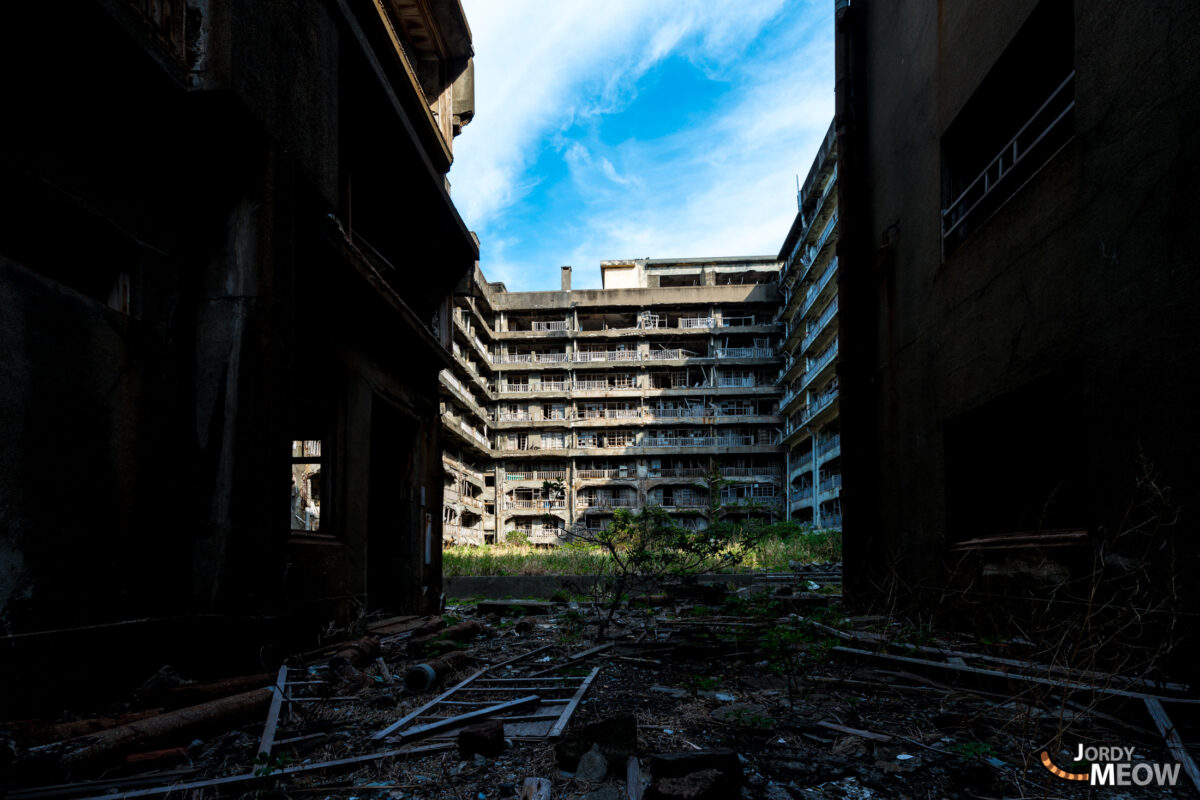



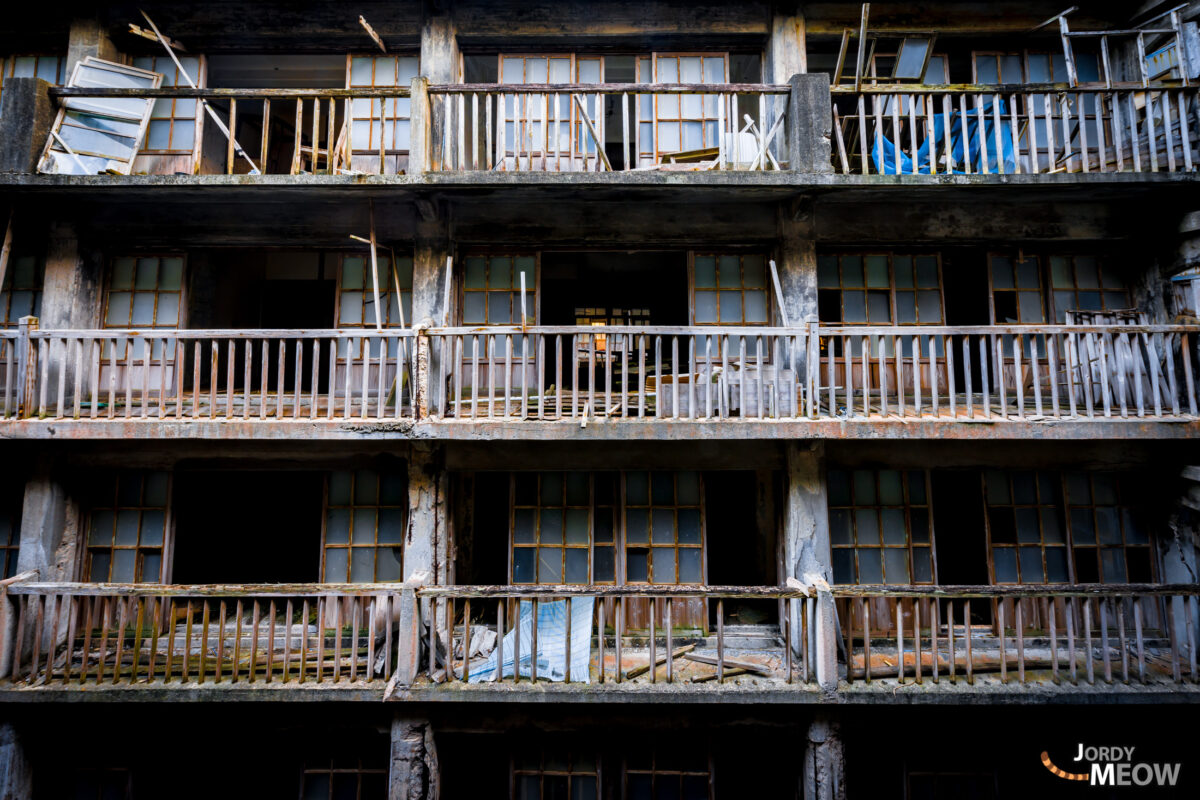
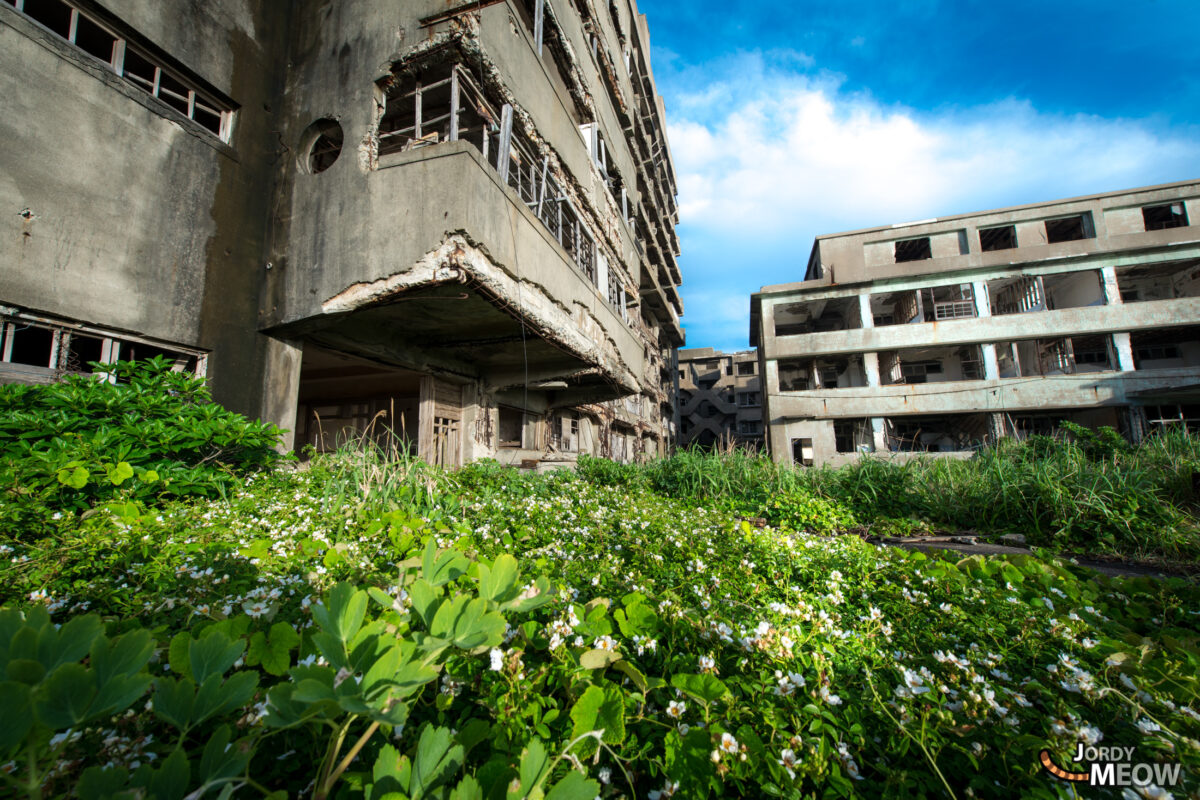
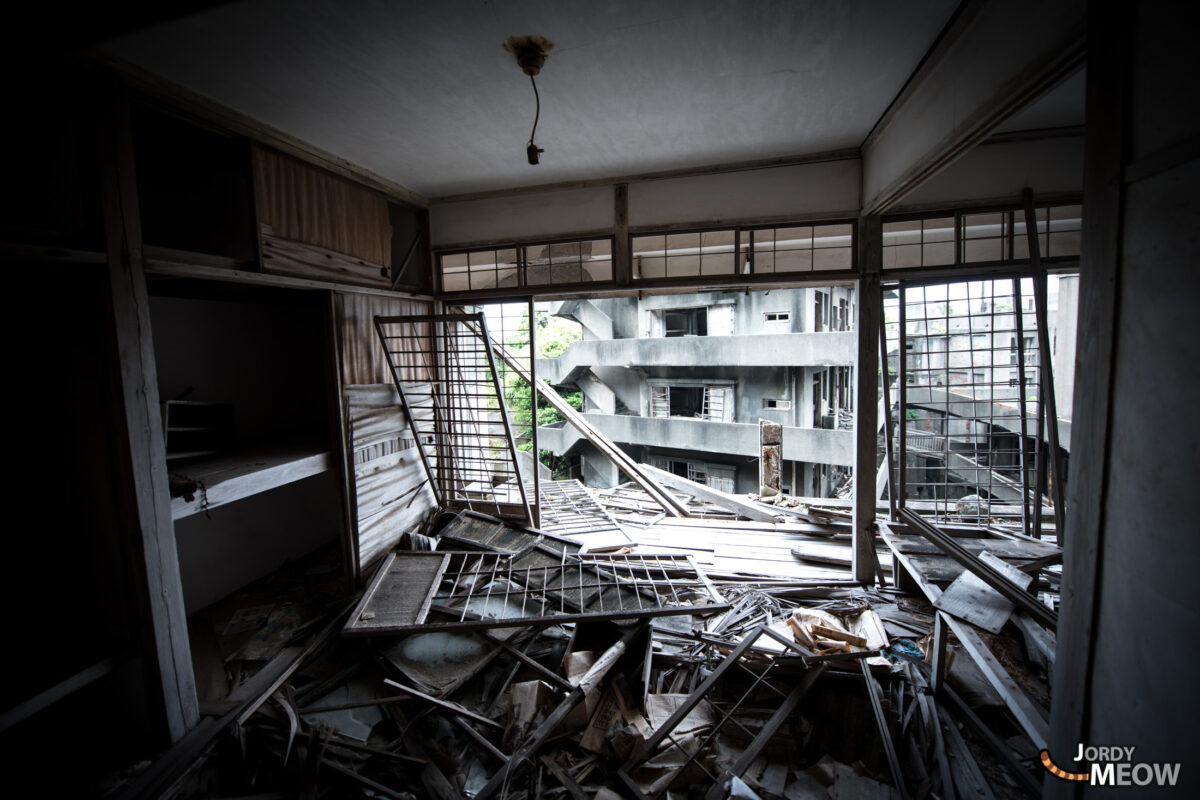
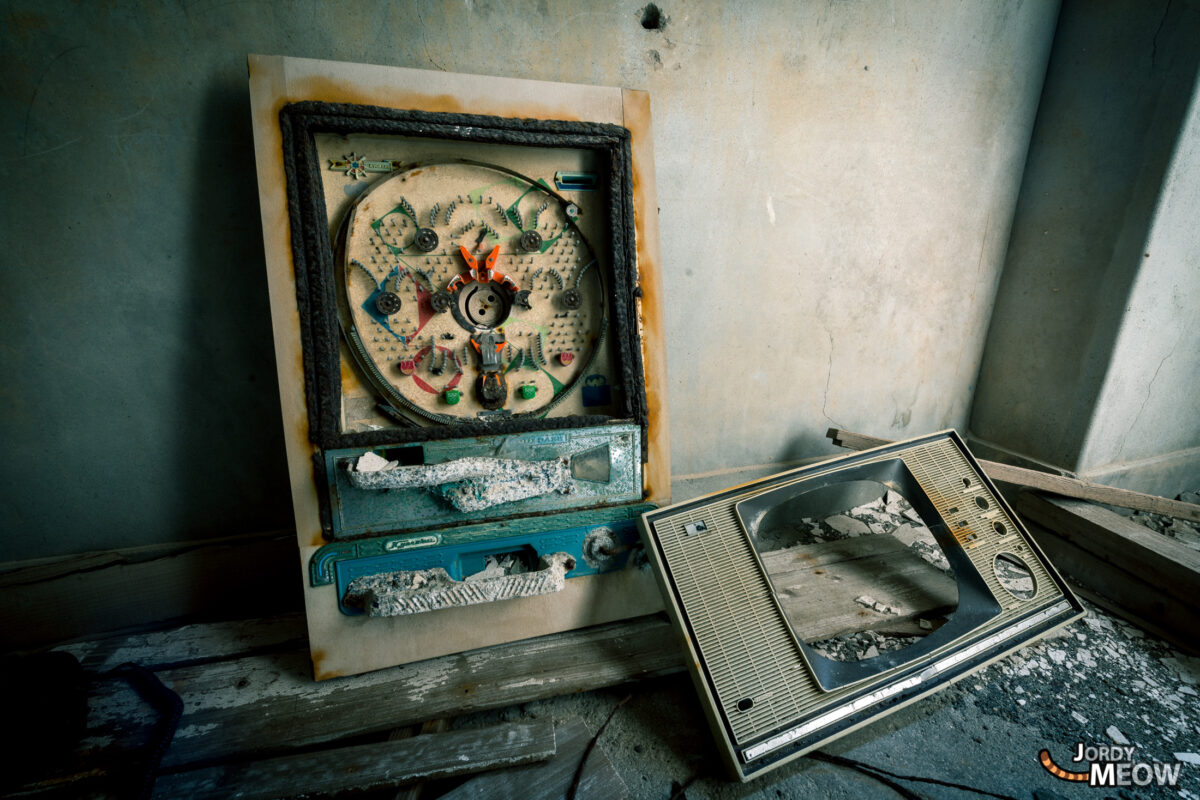
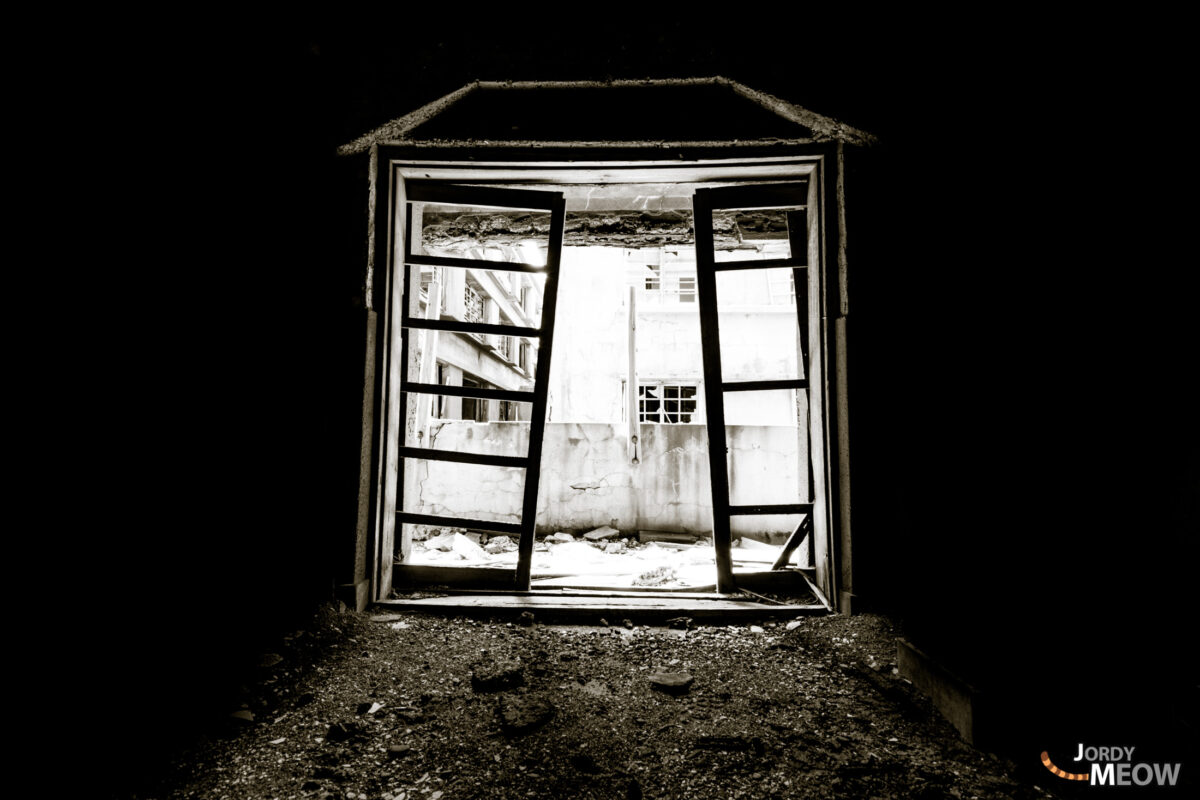



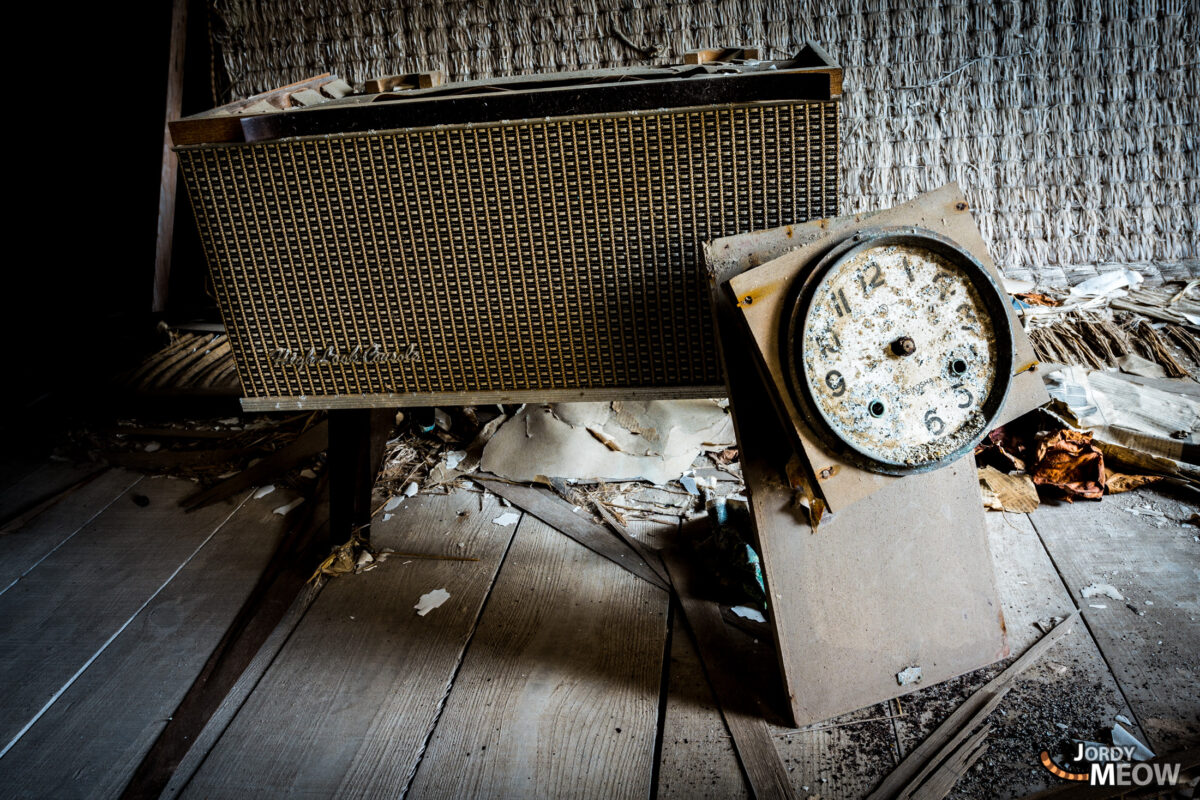




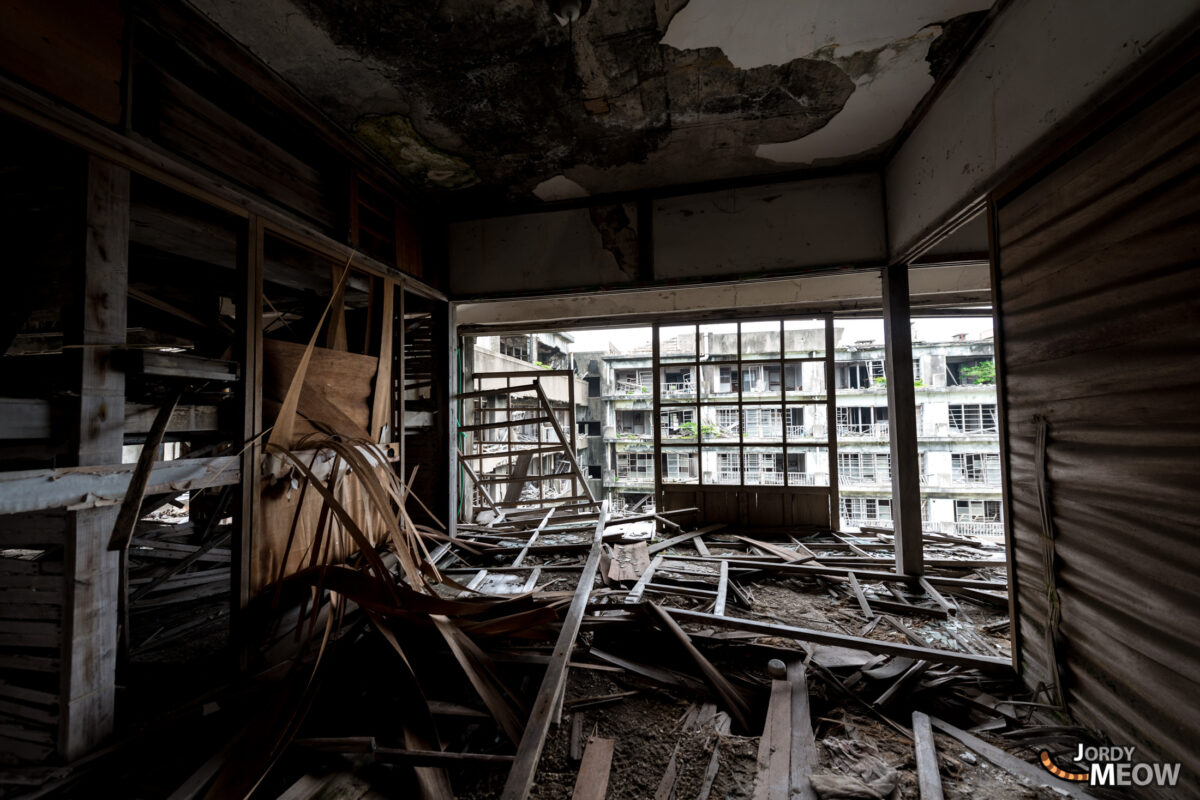








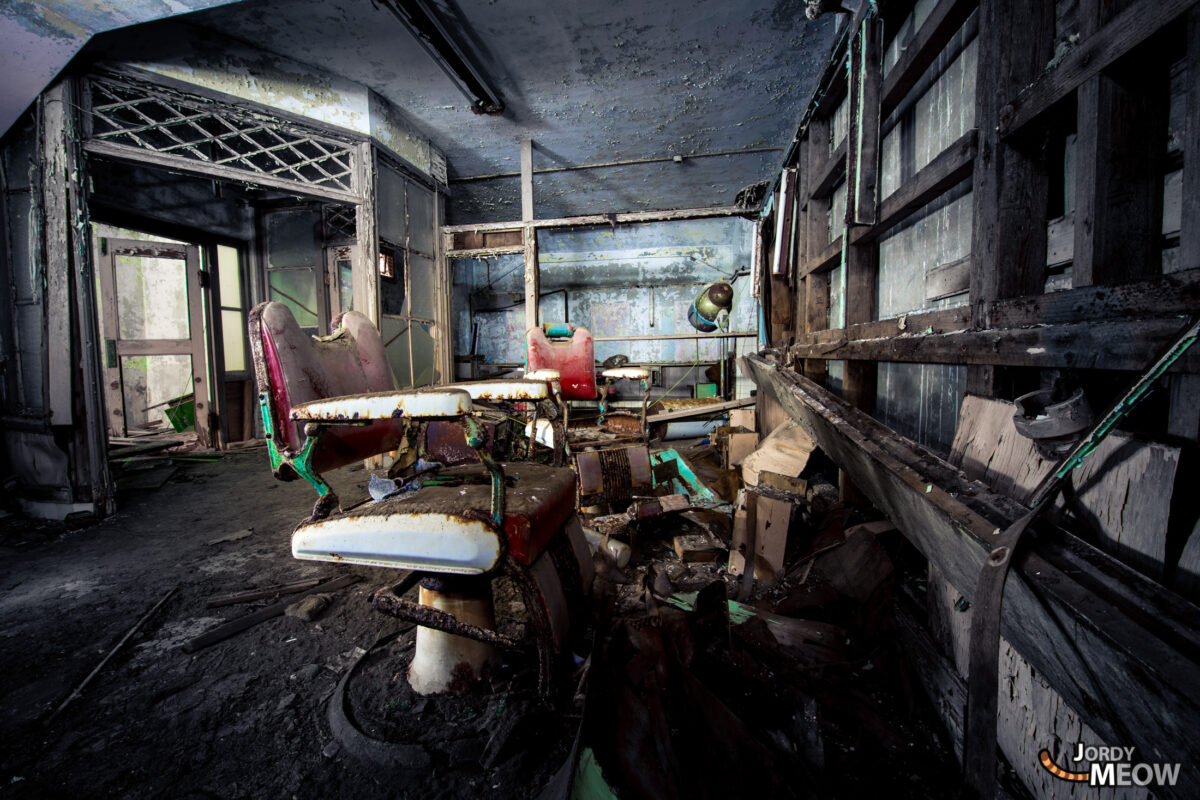

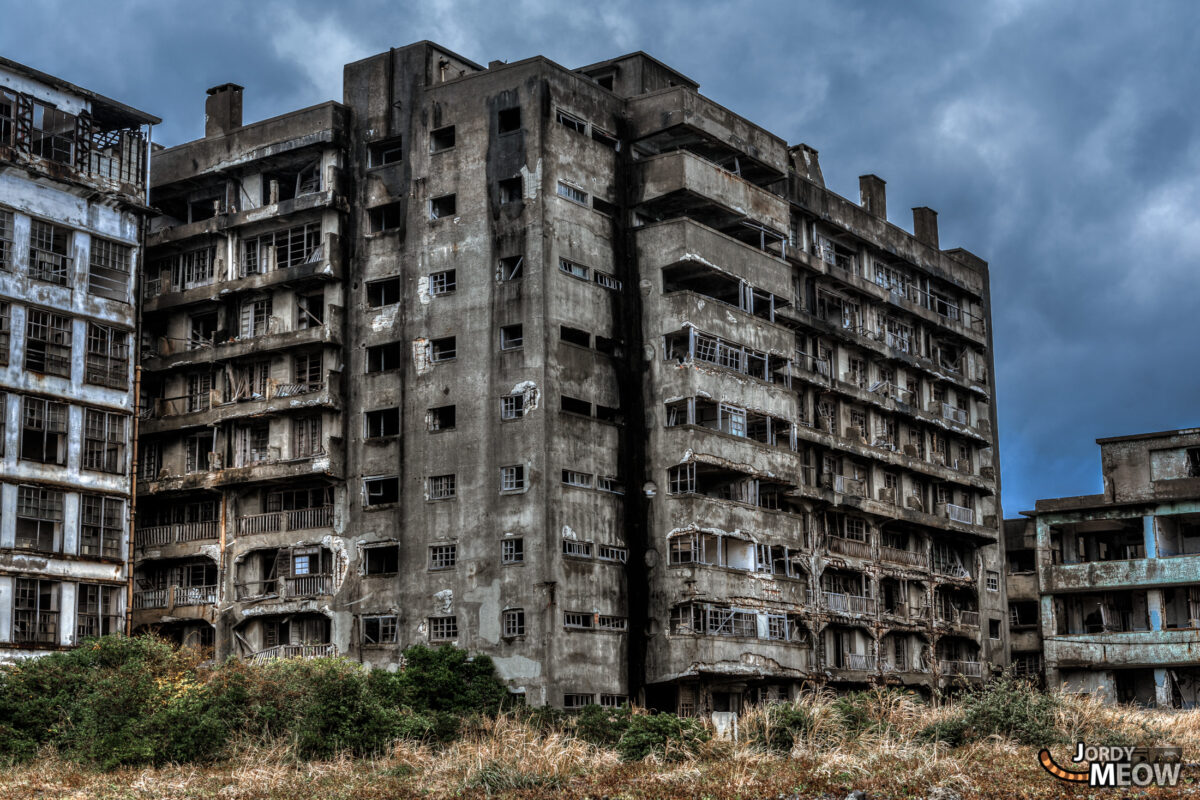
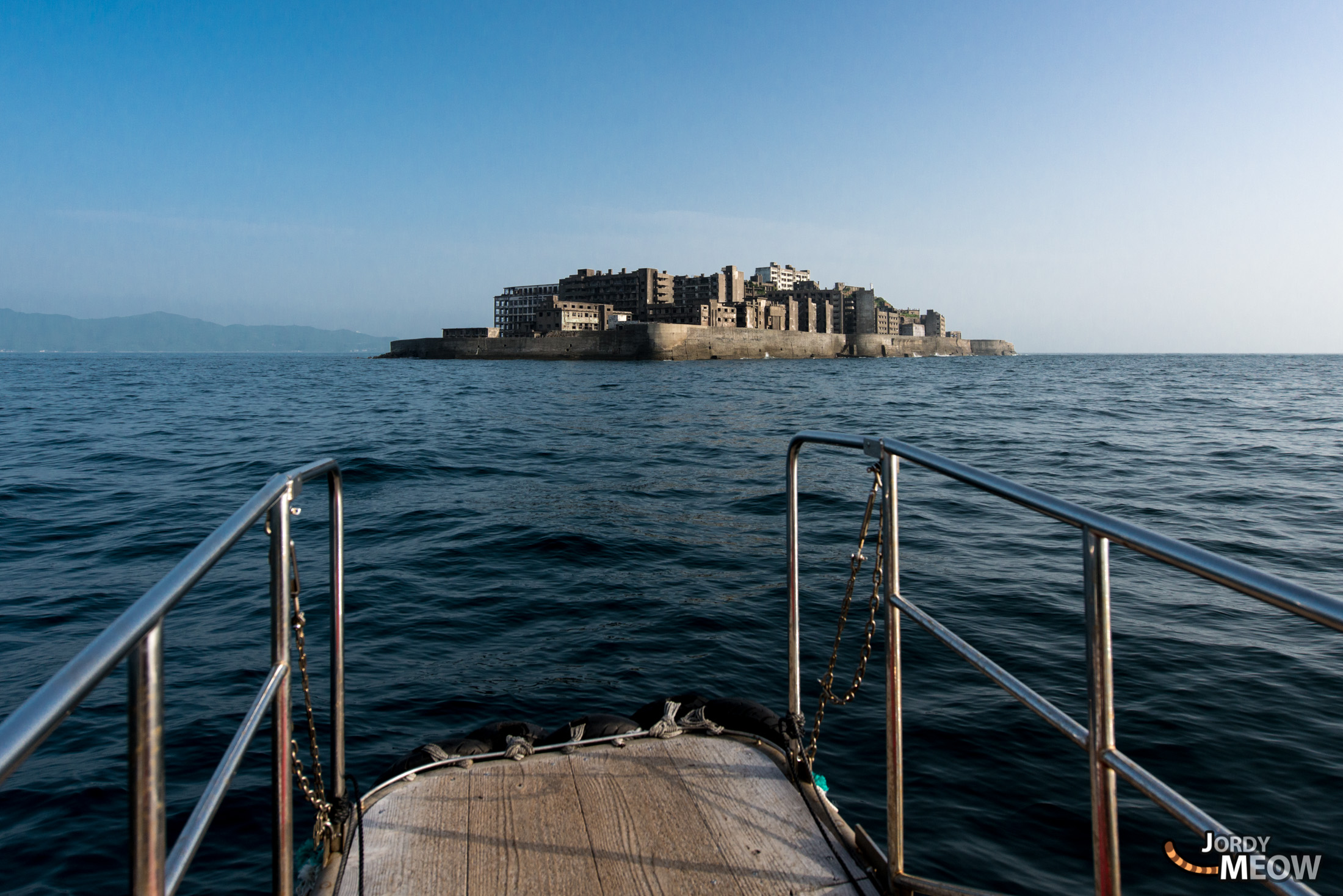
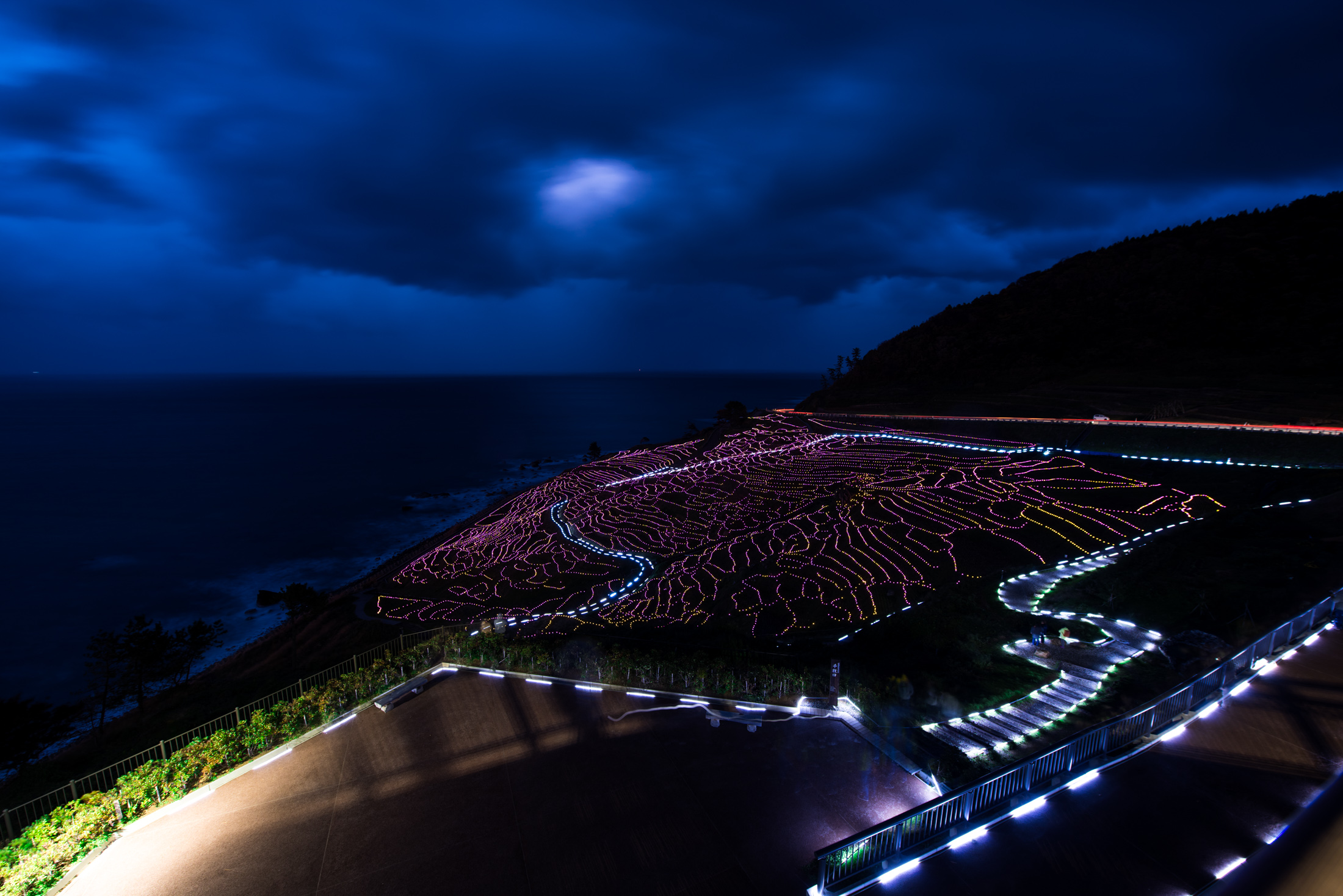
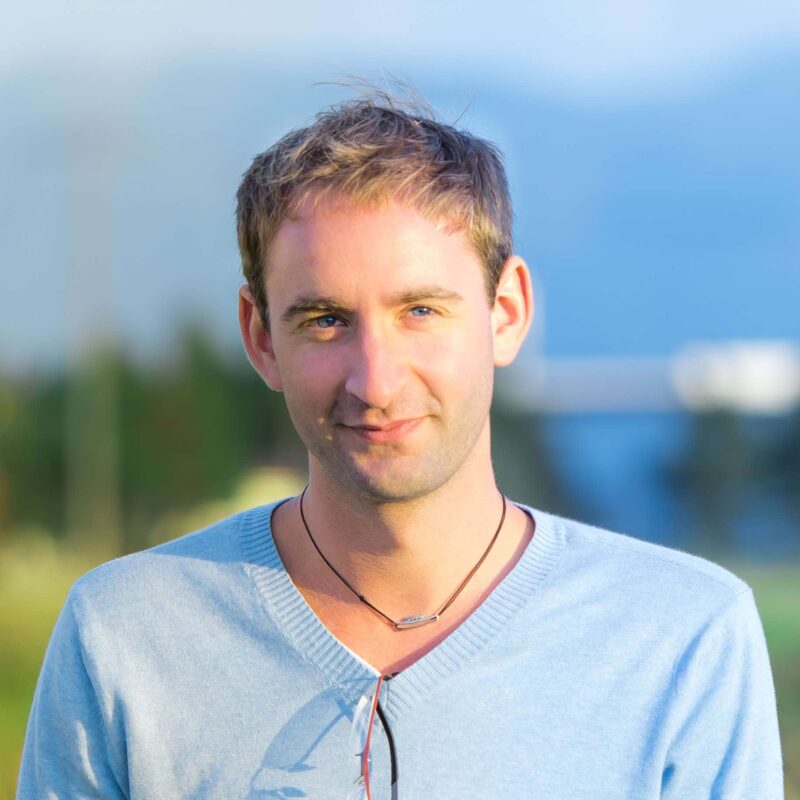










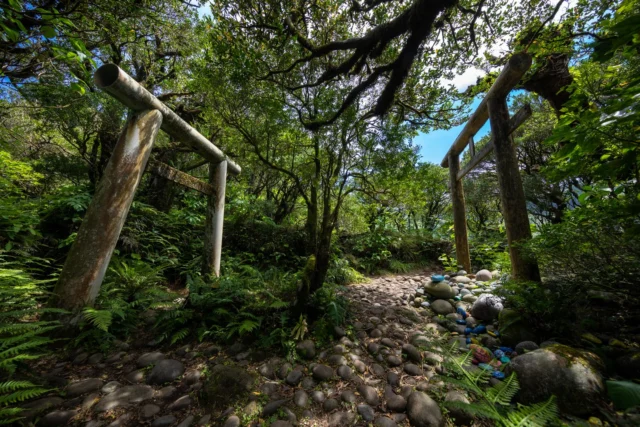


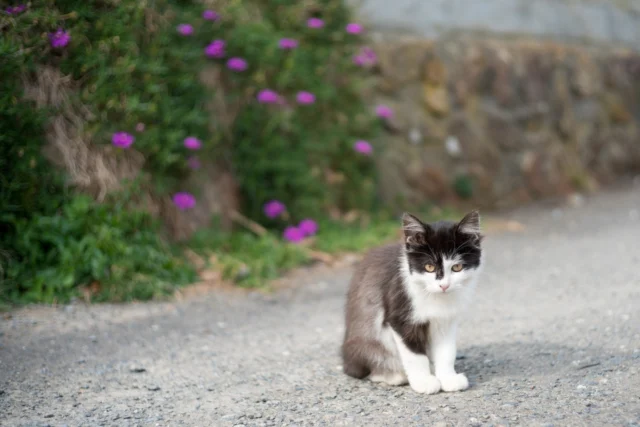
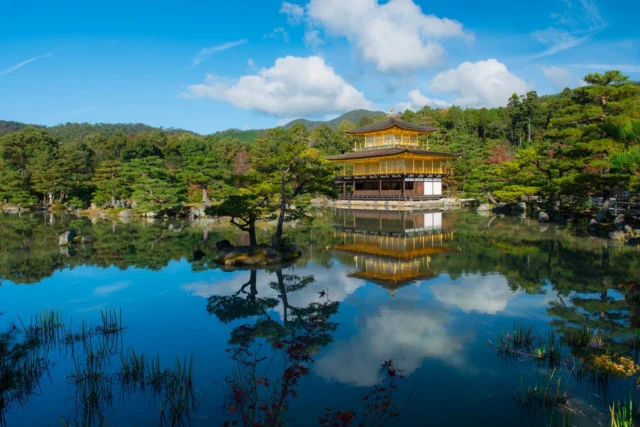
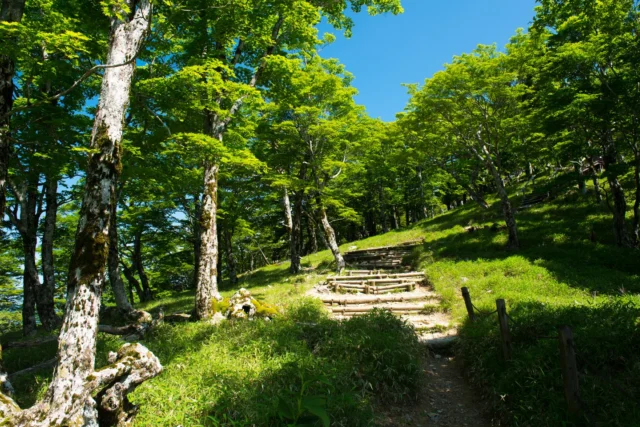
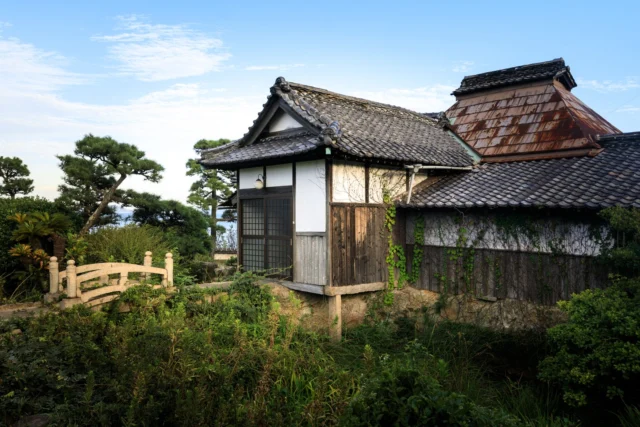

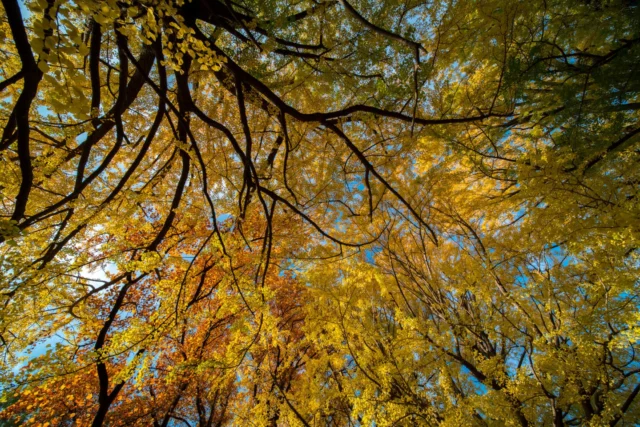
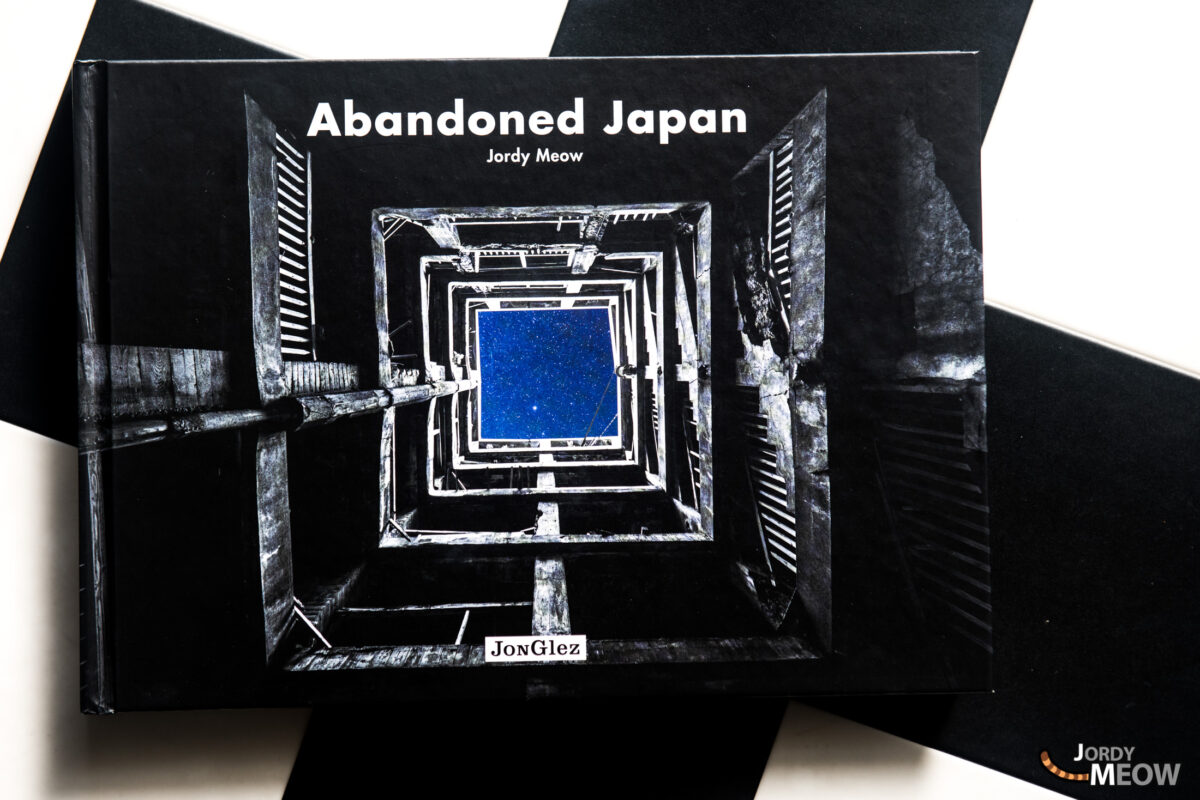

















[…] 3. The Block 65 […]
awesome place
The best!
4.5